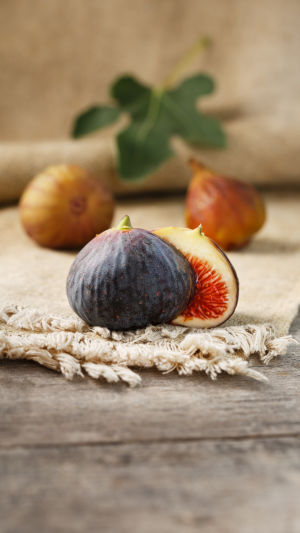The fig, scientifically classified under the genus Ficus in the mulberry family, is a deciduous shrub or small tree with multiple branches. Its leaves are small, lobed, and ovate with irregular blunt teeth along the edges.
The fruit, known as fig, grows in the leaf axils and has a pear-shaped appearance, maturing into purple-red or yellow colors. While figs do have flowers, they are hidden within the fruit, and the commonly consumed part is the fig's flower.
Resembling teardrops, these figs are about the size of your thumb, filled with hundreds of tiny seeds, and have an edible purple or green skin. The flesh inside is pink and has a mild, sweet taste. Wild fig trees rely on fig wasps for pollination.
Figs are among the oldest cultivated fruit trees globally. They thrive in warm, moist climates, are resilient to poor and dry soil, and prefer well-draining sandy loam. Fig cultivation is believed to have originated in the Carya region of ancient Anatolia. At the same time, some theories suggest its roots in the southern Arabian Peninsula, including present-day Saudi Arabia and Yemen.
The plant later spread to regions like Syria and the Caucasus. Around the 14th century BCE, Greeks and Phoenicians introduced figs to various Mediterranean coastal areas.
There is a wide variety of fig species, including popular ones like Brunswick, Penglai Persimmon, and Green Peel.
1. Brunswick:
A dual-purpose variety for summer and autumn, with a predominant autumn harvest. Summer figs are oval and green-yellow when ripe, while autumn figs are inverted cone-shaped or inverted oval, with an average weight of 50-60g.
The skin is yellow-brown, and the fruit is hollow. The reddish-brown flesh is sweet and aromatic. The tree has moderate vigor, a semi-open canopy, dwarfed stature, weak branching, strong continuous fruiting ability, low yield, cold resistance, and strong salt tolerance.
2. Penglai Persimmon:
We are specialized in autumn harvest, with very few summer figs. Autumn figs are inverted, cone-shaped, or oval, with a round and slightly flat top prone to cracking. Each fruit weighs 60-70g, with thick purple-red skin and fresh red flesh containing 16% soluble solids, making it sweeter but coarser in texture.
The tree is robust, upright, tall, and vigorous, with sparse but long, stout branches and good cold resistance.
3. Green Peel:
A dual-purpose variety for summer and autumn, with a focus on autumn. Autumn figs are inverted cone-shaped, with a single fruit weighing 60-80g, sometimes exceeding 120g. They ripen to a light green color, without cracking at the top but with cracks in the shoulder.
The purple-red flesh is hollow and contains over 16% soluble solids, offering excellent flavor. This variety has strong vigor, a semi-open canopy, thick and sparse branches, moderate cold and disease resistance, and relatively strong salt tolerance.
Figs and their leaves are nutritionally rich, offering various potential health benefits. They can promote healthy digestion, reduce the risk of heart disease, and help control blood sugar levels. Fresh figs provide some calories from natural sugars, making them a reasonable low-calorie snack or dietary supplement. On the other hand, dried figs have higher sugar and calorie content due to the concentration of sugars during drying.
Figs also contain small amounts of various nutrients, with notable copper and vitamin B6 levels. Copper is crucial for metabolism, energy production, and the formation of blood cells, connective tissues, and neurotransmitters. Vitamin B6 is essential for breaking down dietary proteins and producing new proteins, playing a vital role in brain health.
Fresh figs, fig leaves, and fig leaf tea are essential to a healthy diet.





